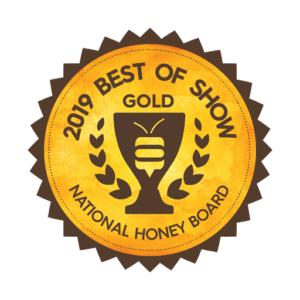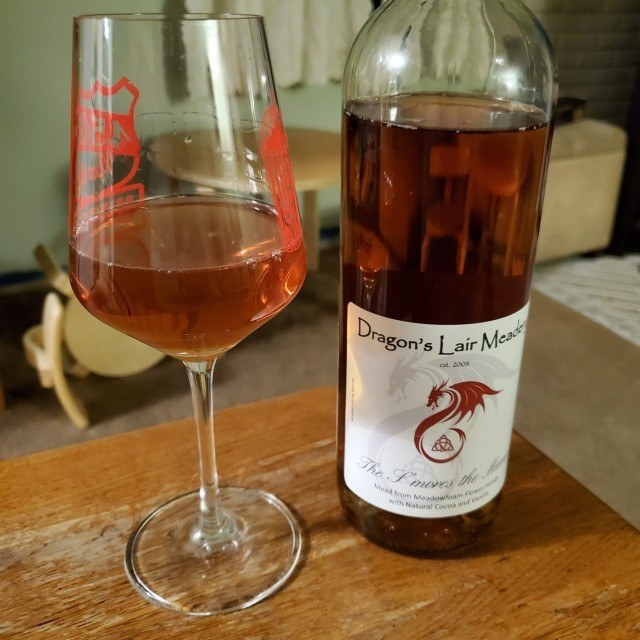
In these uncertain times, we’re taking a look back on a happy day: The National Honey Board’s inaugural Mead Crafters Competition. An astounding 344 meads from throughout North America were submitted for the event, and the S’mores the Merrier from Dragon’s Lair Meadery in Lakewood, WA, took home Best of Show honors.
Dragon’s Lair Meadery’s The S’mores the Merrier advanced to the Best of Show round by winning the “Specialty-Sweet” category, and we spoke to Chris Webber, the man behind the award-winning mead, about the origin story of the mead and the delicious meadowfoam honey that brought it all together.
NHB: Congratulations on your win! How did you come up with the concept and idea for The S’mores the Merrier?
Webber: It was a total afterthought to send it off. We weren’t expecting a lot, so to get the win was a complete shock. I had the mead in mind for quite a while. We use honey, fruits and berries from the Pacific Northwest. A few months ago, we made up an experimental batch of mead to see if we could make something that tasted like a S'more.

We used Oregon meadowfoam honey to get the marshmallow flavor, then we added some cocoa nibs and whole vanilla beans. It turned out pretty awesome, so we decided to enter it in the competition. We make decent batches of mead — a batch requires about 10 gallons of honey — and it sat in the winery for about a year or two, waiting for an idea. I picked up some vanilla bean and cocoa nibs, and I had developed the idea years ago to make this S’mores-like mead, and I never had the time.
A year and a half ago I was diagnosed with multiple myeloma, and everything came to a screeching halt. After about six months I was out of treatment, and I was able to get to the winery and play around for a minute. I did some experimenting and took the meadowfoam and the other ingredients I had accumulated, and I formulated this batch of mead. It took a couple of months to go through the process, and I had some buddies taste test it. It was about that time that the National Honey Board announced the competition.
NHB: Let’s delve into those yummy ingredients a little more.
Webber: I used meadowfoam honey for the “marshmallow” flavor. We get chocolate cocoa nibs from Seattle, also with great flavor. If you’re going to make a good mead you have to make sure you get the best ingredients. Vanilla bean helps bring out the cocoa flavor, and we back sweetened with meadowfoam honey and brown sugar to help bring out the graham cracker flavor.
How do we get the flavors we want without putting 20 lbs. of graham crackers in there? I took the mead and broke it down into flavor components. I built the wine not with the grapes, but other components, deconstructed it to break down the flavor components, and then built it back up. I think we ended up with a phenomenal mead that way. We know that our S’mores is the best dessert mead that we can make.

NHB: How did you maintain such a strong honey presence with all of the other ingredients in this mead?
Webber: One of the challenges I've observed with honey fermentations is that a lot of the flavor tends to ferment out. You can still have good quality mead, but it’s just not as strong. As a result, we back sweeten the mead with the honey that we used in the beginning. We build the batch to come out to about 14 to 15% alcohol by volume (ABV) — because you dilute the alcohol a smidge when back sweetening. That gives us the marshmallow flavor that we want back in the mead and it also gives us the ability to control the level of sweetness that we want. That helps us commercially maintain a consistency that we can put out batch after batch.
The Mead Crafters Competition is BJCP-certified and open to commercial meaderies in the United States. The submitted meads were judged based on their aroma, appearance, flavor, mouthfeel, and overall impression. To register for the 2020 Mead Crafters Competition, visit http://meadcrafterscompetition.com/.
